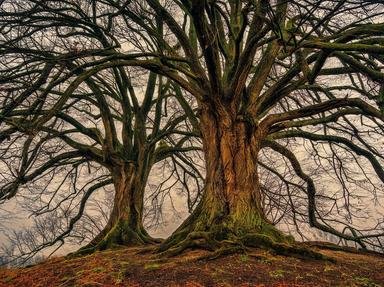Quiz Answer Key and Fun Facts
1. This 1987 film was famous for making married men everywhere terrified about committing adultery, and concluded with a nail-biting climax in which the crazed antagonist attacked her ex-lover and his wife in their bathroom with a kitchen knife. However, the movie originally had a very different ending, which was jettisoned after test audiences responded unfavorably to it. What film was this?
2. For the classic space adventure film "Star Wars", George Lucas had originally filmed one scene that took place in the hangar bay of the Millennium Falcon, but that scene was left out of the film's theatrical release in 1977. Some 20 years later, Lucas included the scene in the "Special Edition" of the film that was released in 1997, thereby introducing one character into the movie who was nowhere to be seen in the original version of the film. Which character was this?
3. Steven Spielberg's 1982 blockbuster "E.T. The Extra Terrestrial" originally featured a cameo appearance by a famous actor, but the scene was cut out of the film before its release. What was depicted in this scene? (Hint: The other scenes described were all in the final cut of the film.)
4. On very rare occasions, movie scenes that were left on the cutting-room floor have found their way into a future installment of a successful film franchise, even though they were originally intended for a different movie. In an extreme example of this, this sequel from 1982 famously utilized footage that had been left out of two earlier films, because the actor who played the main character had passed away, thereby preventing him from filming any new scenes for the picture. Name the film.
5. The final flashback in "The Godfather, Part II" was a scene set in December, 1941, which depicted the extended Corleone family at home, waiting to greet Vito, the family's patriarch, with a surprise birthday party. Although he featured in the original script, which member of the Corleone family never appeared in this scene because the actor who portrayed him failed to show up on the set on the day the scene was filmed?
6. "The Exorcist" featured many terrifying scenes that chronicled the demonic possession of a 12-year-old child named Regan, but one disturbing sequence was removed from the film by its director before its theatrical release in 1973, only to be reinstated subsequently into a 2000 version of the film called "The Exorcist: The Version You've Never Seen". Which of the following scenes was NOT featured in the original version of the film?
7. Which 1977 film about aliens was re-released to cinemas three years later in 1980, after its director re-edited the film to include scenes that never made the original theatrical cut, only to have some of this footage (including a scene depicting the inside of a spaceship) removed again for a 1998 home video release?
8. Model-turned-actress Andie MacDowell made her motion picture debut as Jane in 1984's "Greystoke: The Legend of Tarzan, Lord of the Apes". However, one aspect of her performance never made the final cut of the film, although it was featured in all of her subsequent films. What was it?
9. The 1986 movie musical "Little Shop of Horrors" was an adaptation of the off-Broadway musical of the same name, and was about a man-eating plant from outer space called Audrey II. The film was also famous for discarding an elaborate 23-minute sequence from its original release, after test audiences found it too disturbing. Which of these scenes did NOT make the final cut of the film?
10. Actor Eric Stoltz was initially cast as the lead in this time travel movie from 1985, and even filmed numerous scenes involving a chase on a skateboard, a clock tower, and a deserted shopping mall parking lot. Ultimately, his performance never made it into the finished film, as he was replaced in the middle of the shoot by a different actor. Which film was this?
Source: Author
jmorrow
This quiz was reviewed by FunTrivia editor
Polaris101 before going online.
Any errors found in FunTrivia content are routinely corrected through our feedback system.

